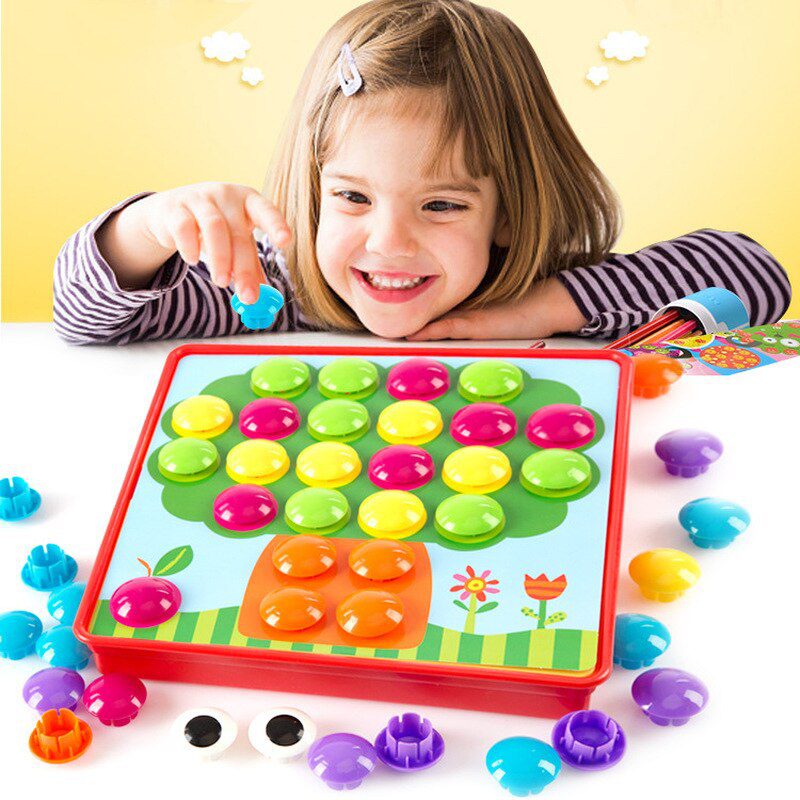Unlocking Math Through Fun and Engaging Toys
Math education is a challenge that many parents and educators face when teaching children. It is even more difficult if the child isn’t particularly inclined to learn math. But toys can be an effective tool in learning basic math skills. Toys can help provide an interactive and fun approach to teaching math, making it easier for a child to understand the concepts and work through problems in their own way. Let’s explore the importance of using toys for teaching math, provide detailed reviews of 5 types of toys designed to help children learn math, and evaluate their effectiveness across different age groups.


Why Should We Use Toys To Help Children Learn Math?
Math can be a tricky subject to teach children, as it involves memorizing rules and solving problems which many kids find overwhelming or boring. By utilizing toys in the classroom setting or at home, we can make mathematics more interesting, enjoyable and easier to grasp for kids. Toys offer exciting opportunities for hands-on interaction with mathematical concepts, allowing them to explore shapes, patterns, and problem solving strategies in creative ways that are fun and appealing to kids of all ages. Additionally, toys allow children to gain understanding by doing instead of simply listening passively – this boosts confidence as it enables them to develop self-reliance when problem-solving. Finally, research has shown that the use of appropriate educational tools not only improves cognitive abilities such as problem-solving but also increases motivation levels towards specific topics. This makes learning math more meaningful for children which translates into better academic performance overall.
Reviews on Different Types of Educational Math Toys
1) Magnetic Numbers: Magnetic numbers are great for introducing children aged 3-7 years old to basic counting skills while giving them plenty of room for creativity. These sets come with pieces made from durable plastic that stick together thanks to embedded magnets inside each piece – this allows your child practice assembling numbers while strengthening hand-eye coordination skills along the way. Furthermore, vibrant visuals give kids lots of opportunity for imaginative play while they work with numbers and numerical values through sorting activities – thus building confidence in working out simple number problems like addition or subtraction!
2) Counting Bears: Counting bears are great educational tools designed specifically for early learners aged 2-4 years old; these colorful bear shaped posable figures come with slotted discs making it easy for your little one to count up numbers accurately as well as practice fine motor skills like hand gripping or pinching movements needed during counting exercises! Plus each toy contains friendly bear characters which adds a playful personality element that helps keep young minds engaged during counting activities!
3) Pattern Blocks & Boards: Pattern blocks & boards offer an ideal opportunity for those aged 4-8 years old to learn about shapes & geometry in a fun yet engaging way – these wooden blocks come in various shapes such as triangles or squares while being accompanied by large laminated boards with pre cut grooves where blocks can fit snugly within its form so your child can recreate simple numeral images like a house or tree without any fuss!
4) Cuisenaire Rods: Cuisenaire rods go beyond just teaching basic arithmetic operations such as multiplication tables; these wooden rods come provided in ten different colors coming with varying lengths representing numerical values between 1 – 10 respectively allowing kids aged 6-8 years old construct their own story based on mathematical foundations related attractions like adding or subtracting numbers from each other! Plus various activities provide opportunities fine motor improvement depending on what kind of project your child decides upon – craftsmanship skills improve upon assembling individual rods together while sharpening mental agility when figuring out appropriate rod placements corresponding with certain mathematical equations!
5) Fraction Dice: Fraction dice can be used by those aged 8+ years old who are interested in gaining a better understanding of fractions especially how they relate back into whole numbers; these educational dice resemble regular cubes however each side stands out having unique sets apart markings ranging from halves , thirds etc… rolling one automatically creates fractions that correspond directly into whole numeral terms thus enabling practice putting larger values back into smaller units helping recognize how fractions similarly function within maths equations!
Conclusion
In conclusion, there are several types of educational toys available today designed specifically towards helping improve mathematical skills amongst younger generations – not only do these products offer interactive experiences bridging numeracy gaps but also increase motivation levels towards maths topics making lessons more enjoyable & meaningful over time leading onto greater academic achievement down the line! With careful consideration paid towards selecting age appropriate material parents & educators should find no shortage uses incorporating products discussed within this article hence improving learning outcomes significantly.
